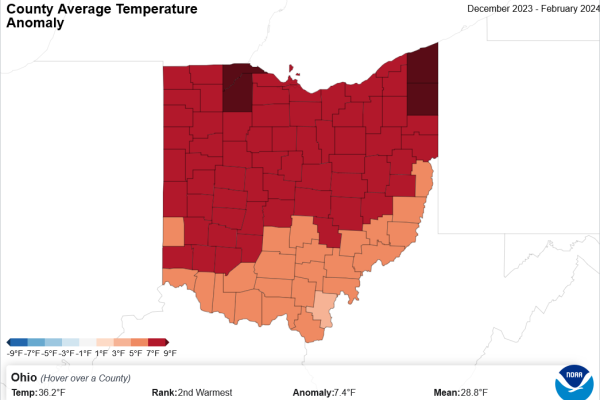Record-Breaking Warmth Defines Winter 2023–24 in the U.S. and Marks Ohio's Historic Season

The National Oceanic and Atmospheric Administration's (NOAA's) National Centers for Environmental Information has published its U.S. Climate report for February 2024, highlighting an unprecedented warm 2023–24 winter season for the contiguous United States with a period of extraordinary climate conditions that have affected extensive regions, including the Upper Midwest, Great Lakes, and Northeast, with eight states recording their warmest winters.
The report details that February 2024 was the third-warmest February on record for the nation, with a mean temperature of 41.1°F, which is 7.2°F above the average. In addition, Ohio experienced its second-warmest winter on record (1895-present), with a mean temperature of 7.4°F above the 20th-century mean.
This warming trend was widespread, with most contiguous U.S. experiencing above-average temperatures, particularly across the Mississippi Valley, Great Lakes, and southern Plains. Such conditions resulted in the lowest ice coverage recorded in mid-February for the Great Lakes, dropping to a mere 2.7%.
Despite these warm temperatures, the season's precipitation patterns were mixed. February's precipitation fell into the driest third of the historical record for the month, while overall, the winter season saw precipitation levels in the wettest third of records, reflecting a complex interplay of climatic factors.
The report also emphasized the economic impact of extreme weather events. Since 1980, the U.S. has experienced 377 separate billion-dollar weather and climate disasters, with total damages surpassing $2.67 trillion.
Looking ahead, NOAA's forecast suggests above-average temperatures are likely to persist in much of the eastern U.S. into March, with varying precipitation expectations across the country. The report also indicates an elevated wildfire potential in several regions, an ongoing challenge posed by climatic variability.
To learn more, visit Assessing the U.S. Climate in February 2024.
